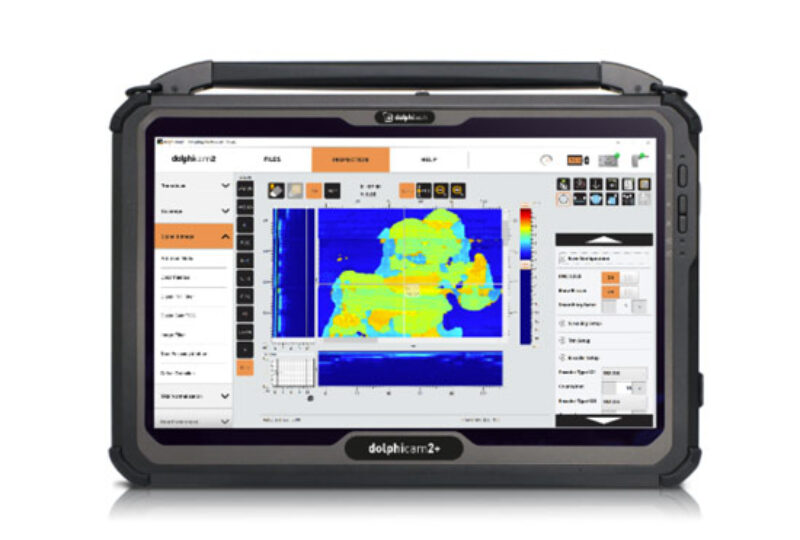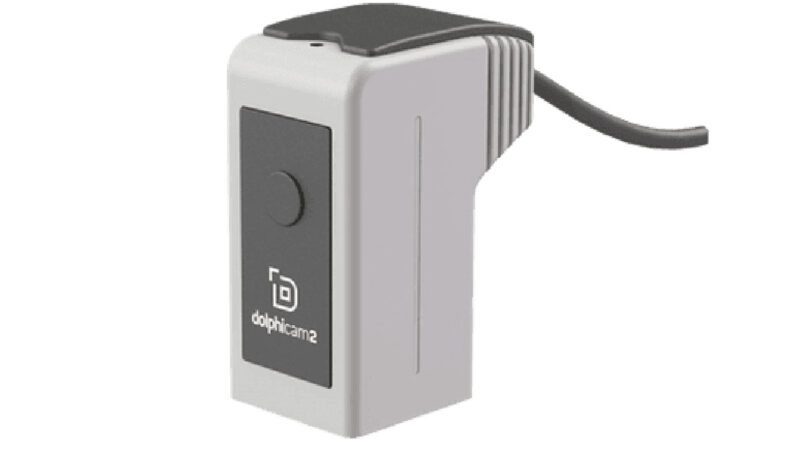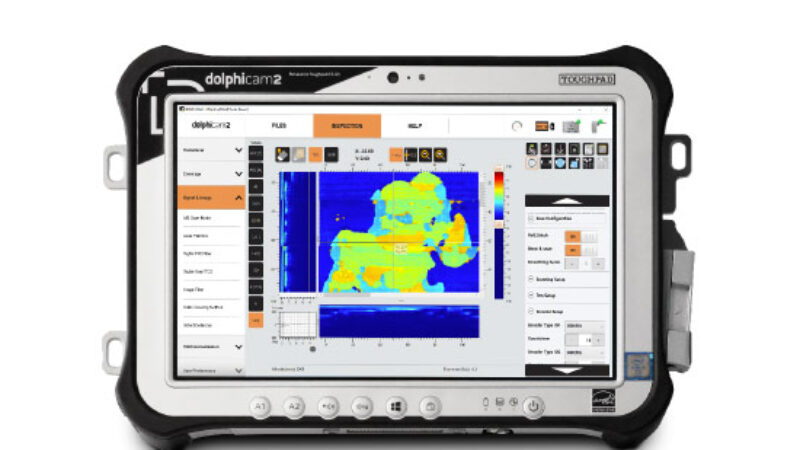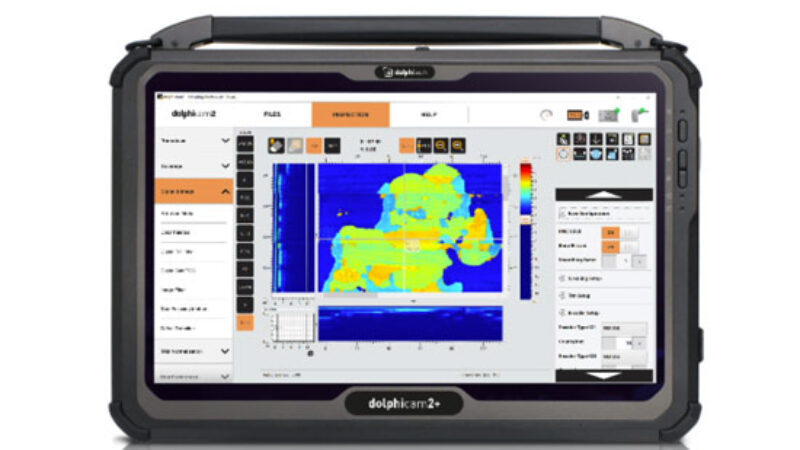EXECUTIVE SUMMARY
An Airbus A380 operator provided dolphitech with Glass laminate aluminium reinforced epoxy (GLARE) calibration blocks to test the ability of the dolphicam2 to detect artificial reflectors within the material. GLARE is a lightweight fibre metal laminate with high resistance to impact and fatigue. As such, it is used as an alternative to aluminium alloys in aerostructures, such as for the upper fuselage of the A380. However, GLARE is challenging to inspect as it is highly attenuative to ultrasound.
Despite this challenge, the dolphicam2 was capable of clearly detecting the reflectors in the blocks, as well as penetrating through the thickness to the back surface. In-service impact damage would likely occur as delaminations between the metal and composite sheets, and as such the planar reflectors within these blocks are representative. Therefore, the feasibility of using the dolphicam2 to inspect for impact damage within GLARE is demonstrated. The results are shown in the following capability study.
STUDY OVERVIEW
The need for lightweight aerospace materials with superior mechanical properties to conventional aluminium alloys has led to an interest in fibre metal laminates (FML) like Glass laminate aluminium reinforced epoxy (GLARE).
The material properties of GLARE are similar to aluminium metal sheets, but it has a better tolerance to impact damage, and it is lighter. GLARE is made from layers of aluminium with layers of Glass Fibre Reinforced Polymer (GFRP) pre-preg between them. The layers of GFRP help prevent any cracks in the aluminium layer from propagating throughout the thickness of the component. While there are significantly higher material costs associated with using GLARE, the longer lifetime until failure and lower weight can make GLARE cost-effective over the lifetime of an aircraft.
An Airbus A380 operator provided dolphitech with three GLARE blocks of different thicknesses with artificial reflectors that simulate impact damage. GLARE is prominently used in the Airbus A380, where GLARE is the structural material for the upper fuselage shell and these blocks are used to assess the performance of NDT equipment.
Photographs of just one of the blocks are shown (Figure 1) since the three blocks look very similar. All the blocks are 150 mm in both width and length, though the thickness of each block is different. This thickness is given in Table 1. Each has two artificial reflectors: a flat bottom hole and a rectangular notch. The notch runs across the entire length of the sample and is 6 mm wide. In each block, these two flaws can be seen from the back face (Figure 1), and they share the same depths as given in Table 1. The ultrasonic signature of these reflectors should be similar to impact damage as impact damage results in delamination and an air gap in the material.
Table 1 also contains the type of GLARE used for each block. There are six grades of GLARE. The grade of GLARE used, Grade 3, means the glass fibre ply orientations are 0°/90°.
Figure 1. Photographs of one GLARE block (labelled Block 3). (a) is the inspection face and (b) is the back face.
Table 1. Type and nominal dimensions of GLARE blocks. The naming convention for the type is GLARE grade – number of aluminium layers/number of glass fibre layers – aluminium layer thickness. The depths of the flaws are from the back face.
SOLUTION
The blocks were inspected using a dolphicam2+ and a TRM-BF-2.5MHz transducer module (TRM). This TRM is one of our lower frequency models. It is well-suited to thicker materials and attenuative composites. Standard ultrasonic gel was used as a couplant, but water would be sufficient to ensure good coupling.
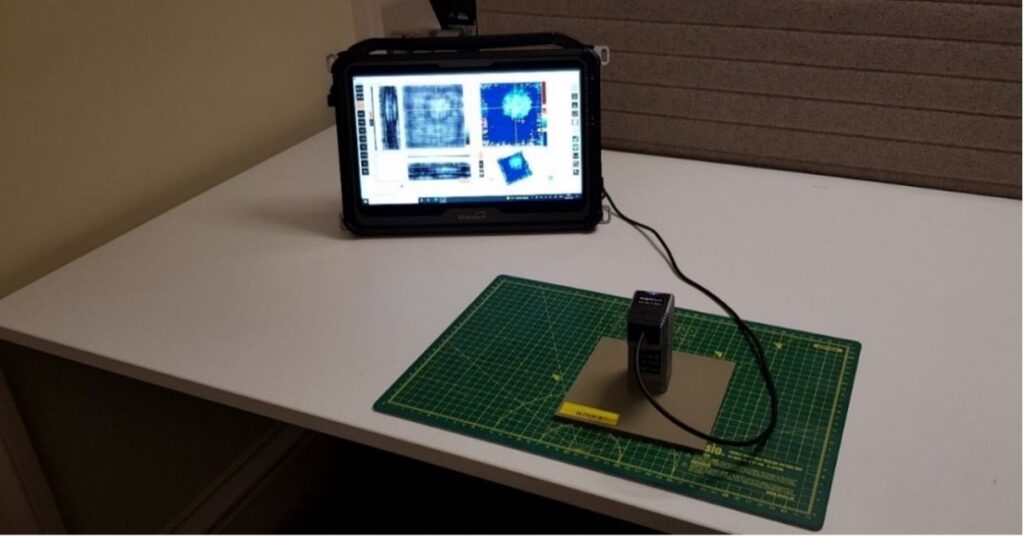
Figure 2. Photograph of dolphicam2+ with TRM-BF-2.5MHz transducer on Block 3.
Single All view scans were taken at two locations on the inspection face of each block: over the flat bottom hole and the notch. The All view scans show all the available views simultaneously. It shows both the amplitude and time of flight C-scans in addition to vertical and horizontal B-scans, a 3D view and an A-scan at a chosen point. The amplitude C-scan is plotted in the bone (greyscale) colour palette and the Time of Flight (ToF) counterpart in the jet (rainbow) colour palette.
CHALLENGES
The material is highly attenuative as the multiple layers within the GLARE material make it harder for sound to penetrate the material. Here, sound energy is reflected at the interface between each layer. This not only reduces the amount of sound energy further transmitted into the part, but it also impedes signal interpretation due to the “noise” from the reflected interface echoes.
FINDINGS
All reflectors were clearly resolved with a clear back wall signal on all blocks. This demonstrates the successful penetration of GLARE with the TRM-BF-2.5MHz to thicknesses of at least 5.6 mm. Figures 3 to 5 show the inspection results from the reflectors in each block. The simultaneous display of the amplitude and time of flight data complement each other. The reflectors particularly stand out in the ToF data, though they are clearly visible in the amplitude data as well. The inspection is easy to perform, with the same setup and settings used throughout. Only the range (ie timebase) was changed for the different blocks to highlight the relevant features. In each image, point markers were placed on the reflector and on the back surface, to obtain quantitative depth readings for all features.
Figure 3. All view scans of reflectors on Block 1. (a) shows the flat bottom hole and (b) shows the notch.
Figure 4. All view scans of reflectors on Block 2. (a) shows the flat bottom hole and (b) shows the notch.
CONCLUSION
This study has demonstrated that the dolphicam2+ can be used to inspect GLARE samples of a range of thicknesses from 1.7 mm to 5.6 mm with a single TRM. It works well on this highly attenuative material to clearly resolve both artificial reflectors and the back wall of the material. These results demonstrate the potential for dolphicam2 to be used to inspect for impact damage, as the delaminations and corresponding air gaps produced by impact damage would be ultrasonically similar to these reflectors.
GLARE inspection is one of many in-service A380 applications well-suited to the dolphicam2 for both aluminium and composites.
AEROSPACE MARKET
Safety is paramount in aviation. Fast extensive inspection is possible using the dolphicam2 ultrasonic technology.
Read moreREQUEST A QUOTE OR SUBMIT AN ENQUIRY
Need help with product information?
Get in touch with our experts for information or a quotation.



